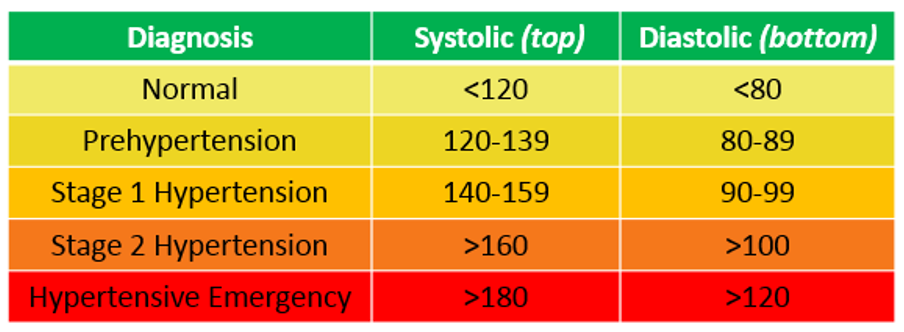Blood Pressure Chart
Blood pressure (BP) is the product of the amount of blood pumped from the heart (cardiac output) and the resistance of flow encountered in the vessel (total peripheral resistance). When the heart beats, blood is propelled from the left ventricle into the systemic circulation. As the ventricle contracts, the force exerted by the blood against the arteries is the blood pressure. Blood pressure is measured in millimeters of mercury (mm Hg). Systolic blood pressure (SBP) is the pressure exerted on the arterial wall during the ventricles’ contraction phase, and diastolic blood pressure (DBP) is the pressure exerted on the arteries during the relaxation phase of the ventricles. Average value for systolic and diastolic blood pressure is 120/80 mm Hg. A condition known as hypertension may be present when systolic and diastolic blood pressure measures exceed 140/90 mm Hg at rest.

